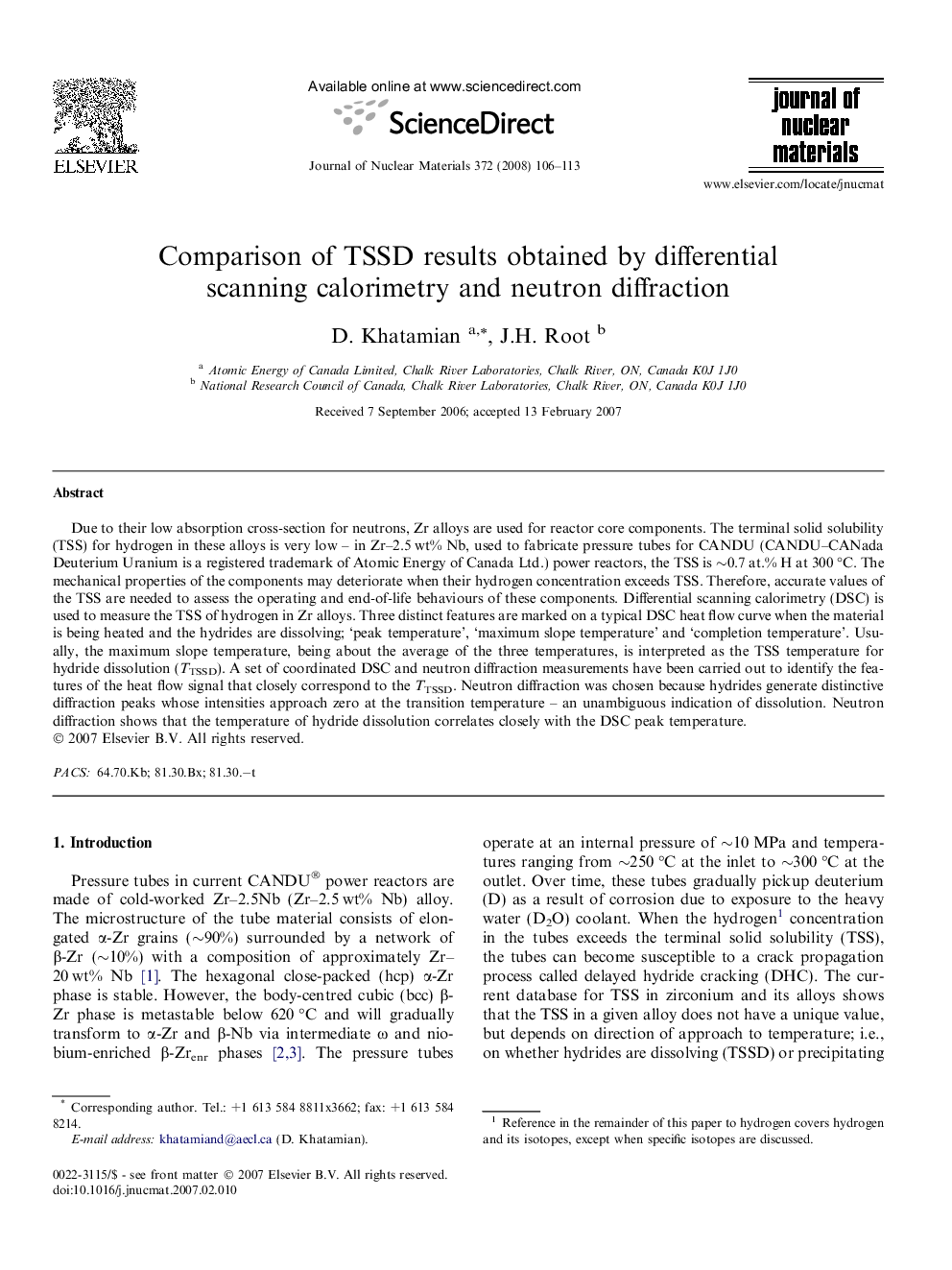| Article ID | Journal | Published Year | Pages | File Type |
|---|---|---|---|---|
| 1568942 | Journal of Nuclear Materials | 2008 | 8 Pages |
Abstract
Due to their low absorption cross-section for neutrons, Zr alloys are used for reactor core components. The terminal solid solubility (TSS) for hydrogen in these alloys is very low - in Zr-2.5 wt% Nb, used to fabricate pressure tubes for CANDU (CANDU-CANada Deuterium Uranium is a registered trademark of Atomic Energy of Canada Ltd.) power reactors, the TSS is â¼0.7 at.% H at 300 °C. The mechanical properties of the components may deteriorate when their hydrogen concentration exceeds TSS. Therefore, accurate values of the TSS are needed to assess the operating and end-of-life behaviours of these components. Differential scanning calorimetry (DSC) is used to measure the TSS of hydrogen in Zr alloys. Three distinct features are marked on a typical DSC heat flow curve when the material is being heated and the hydrides are dissolving; 'peak temperature', 'maximum slope temperature' and 'completion temperature'. Usually, the maximum slope temperature, being about the average of the three temperatures, is interpreted as the TSS temperature for hydride dissolution (TTSSD). A set of coordinated DSC and neutron diffraction measurements have been carried out to identify the features of the heat flow signal that closely correspond to the TTSSD. Neutron diffraction was chosen because hydrides generate distinctive diffraction peaks whose intensities approach zero at the transition temperature - an unambiguous indication of dissolution. Neutron diffraction shows that the temperature of hydride dissolution correlates closely with the DSC peak temperature.
Related Topics
Physical Sciences and Engineering
Energy
Nuclear Energy and Engineering
Authors
D. Khatamian, J.H. Root,
